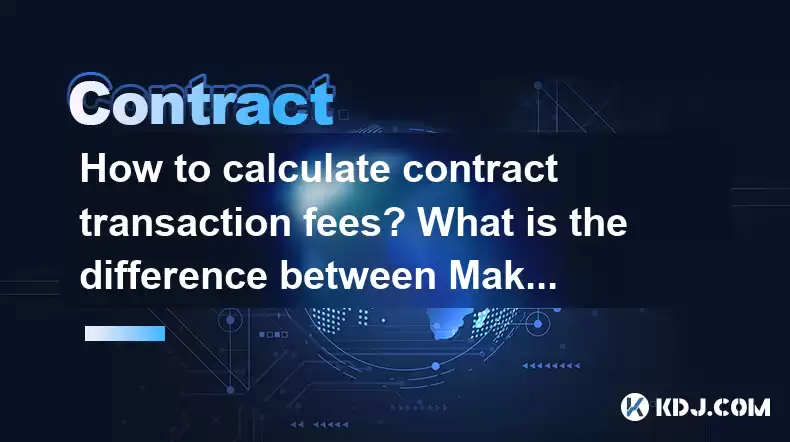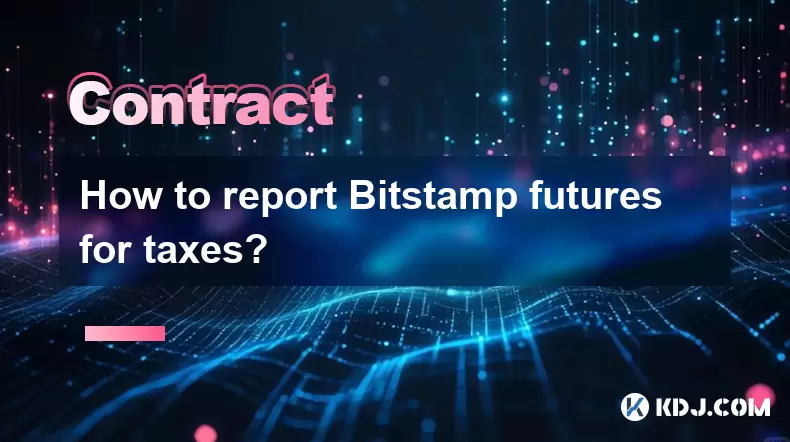-
 Bitcoin
Bitcoin $115000
0.12% -
 Ethereum
Ethereum $3701
4.50% -
 XRP
XRP $3.081
2.99% -
 Tether USDt
Tether USDt $0.0000
-0.01% -
 BNB
BNB $767.9
1.45% -
 Solana
Solana $169.5
3.13% -
 USDC
USDC $0.9999
0.01% -
 Dogecoin
Dogecoin $0.2106
4.30% -
 TRON
TRON $0.3334
1.62% -
 Cardano
Cardano $0.7564
2.54% -
 Stellar
Stellar $0.4165
0.76% -
 Hyperliquid
Hyperliquid $38.75
0.25% -
 Sui
Sui $3.593
3.00% -
 Chainlink
Chainlink $17.08
3.59% -
 Bitcoin Cash
Bitcoin Cash $573.6
4.35% -
 Hedera
Hedera $0.2508
-0.84% -
 Avalanche
Avalanche $23.07
6.46% -
 Ethena USDe
Ethena USDe $1.001
-0.02% -
 Litecoin
Litecoin $120.8
8.17% -
 UNUS SED LEO
UNUS SED LEO $8.943
-0.32% -
 Toncoin
Toncoin $3.400
-5.60% -
 Shiba Inu
Shiba Inu $0.00001255
1.54% -
 Uniswap
Uniswap $9.908
6.32% -
 Polkadot
Polkadot $3.718
2.10% -
 Monero
Monero $303.0
-0.74% -
 Dai
Dai $0.9999
-0.02% -
 Bitget Token
Bitget Token $4.392
0.91% -
 Cronos
Cronos $0.1403
6.31% -
 Pepe
Pepe $0.00001076
1.13% -
 Aave
Aave $267.2
1.80%
How to calculate contract transaction fees? What is the difference between Maker and Taker rates?
Calculating contract transaction fees involves understanding Maker and Taker rates, which can significantly impact trading costs and strategies in cryptocurrency markets.
Apr 28, 2025 at 10:15 am

Calculating contract transaction fees and understanding the difference between Maker and Taker rates are essential aspects of trading in the cryptocurrency market. These fees can significantly impact your trading strategy and overall profitability. In this article, we will delve into the details of how to calculate contract transaction fees and explore the nuances between Maker and Taker rates.
Understanding Contract Transaction Fees
Contract transaction fees are charges imposed by exchanges for executing trades on their platform. These fees can vary based on the type of contract, the trading volume, and whether you are acting as a Maker or a Taker. To calculate these fees, you need to understand the fee structure of the exchange you are using.
Most exchanges provide a fee schedule that outlines the percentage charged for different types of trades. For instance, if an exchange charges a 0.1% fee for a futures contract, and you execute a trade worth $10,000, the fee would be calculated as follows:
- Fee = Trade Value x Fee Percentage
- Fee = $10,000 x 0.001
- Fee = $10
This simple calculation helps you determine the cost of each trade, allowing you to factor it into your trading strategy.
Factors Affecting Contract Transaction Fees
Several factors can influence the fees you pay for contract transactions. Trading volume is one of the most significant factors, as many exchanges offer tiered fee structures where higher volumes result in lower fees. For example, if you trade less than $10,000 per month, you might be charged a 0.1% fee, but if your volume exceeds $50,000, the fee might drop to 0.05%.
Another factor is the type of contract. Some exchanges charge different rates for different types of contracts, such as perpetual futures versus traditional futures. It's crucial to check the specific fee schedule for each type of contract you are trading.
Additionally, market conditions can impact fees. During periods of high volatility, some exchanges may adjust their fees to encourage or discourage certain types of trades. Always stay informed about the current fee structure and any potential changes.
What Are Maker and Taker Rates?
In the world of cryptocurrency trading, the terms Maker and Taker refer to the roles you play when executing trades. Understanding these roles is crucial for calculating your transaction fees accurately.
- Maker: A Maker is someone who places an order that does not immediately get filled, thereby adding liquidity to the order book. These orders are typically limit orders, which means they are set at a specific price and wait for a matching order to come in.
- Taker: A Taker, on the other hand, is someone who takes liquidity away from the order book by executing an order that immediately gets filled. These orders are usually market orders, which means they are executed at the best available price at the time of submission.
Differences Between Maker and Taker Rates
The primary difference between Maker and Taker rates lies in the impact they have on the exchange's order book. Maker orders add liquidity, which is beneficial for the exchange, so they are often rewarded with lower fees. Conversely, Taker orders remove liquidity, which can be detrimental to the exchange's liquidity, so they are typically charged higher fees.
For example, an exchange might charge a 0.05% fee for Maker orders and a 0.1% fee for Taker orders. If you place a limit order (Maker) for $10,000, your fee would be:
- Maker Fee = $10,000 x 0.0005
- Maker Fee = $5
If you place a market order (Taker) for the same amount, your fee would be:
- Taker Fee = $10,000 x 0.001
- Taker Fee = $10
As you can see, the difference in fees can be significant, especially for high-volume traders.
How to Optimize Your Trading Fees
To minimize your trading costs, you can employ several strategies to optimize your fees. One effective method is to use limit orders whenever possible, as they qualify you for the lower Maker rates. Here are some steps to maximize your use of limit orders:
- Analyze the market: Before placing a trade, study the current market conditions to determine the best price for your limit order.
- Set realistic prices: Ensure your limit order price is competitive enough to get filled but not so aggressive that it turns into a Taker order.
- Monitor your orders: Keep an eye on your limit orders and adjust them as necessary to increase the chances of them being filled.
Another strategy is to increase your trading volume. Many exchanges offer volume-based discounts, so by trading more, you can move to a lower fee tier. Here's how you can achieve this:
- Consolidate your trading: If you trade on multiple platforms, consider consolidating your trades on one exchange to increase your overall volume.
- Use trading bots: Automated trading bots can help you execute more trades, thereby increasing your volume and potentially lowering your fees.
Practical Example of Calculating Contract Transaction Fees
Let's walk through a practical example to illustrate how to calculate contract transaction fees and the difference between Maker and Taker rates.
Suppose you are trading on an exchange that offers the following fee structure:
- Maker Fee: 0.02%
- Taker Fee: 0.07%
You decide to execute two trades:
- Trade 1: You place a limit order to buy 10 BTC at $50,000 each. This order does not get filled immediately, so it is a Maker order.
- Trade 2: You place a market order to sell 5 BTC at the current market price of $50,000 each. This order gets filled immediately, making it a Taker order.
Let's calculate the fees for each trade:
Trade 1 (Maker Order):
- Trade Value = 10 BTC x $50,000/BTC = $500,000
- Maker Fee = $500,000 x 0.0002 = $100
Trade 2 (Taker Order):
- Trade Value = 5 BTC x $50,000/BTC = $250,000
- Taker Fee = $250,000 x 0.0007 = $175
In this example, the total fees for both trades would be:
- Total Fees = $100 (Maker) + $175 (Taker) = $275
By understanding the difference between Maker and Taker rates and strategically using limit orders, you can significantly reduce your trading costs.
Frequently Asked Questions
Q1: Can I negotiate transaction fees with an exchange?
A1: Generally, exchanges have fixed fee structures that apply to all users. However, some high-volume traders or institutional investors might be able to negotiate custom fee arrangements with the exchange. It's best to contact the exchange's customer support to inquire about any potential discounts or special rates.
Q2: Do all exchanges differentiate between Maker and Taker rates?
A2: Most reputable cryptocurrency exchanges differentiate between Maker and Taker rates to encourage liquidity and reward users who add to the order book. However, some smaller or less established exchanges might not make this distinction, so it's essential to check the fee schedule of each exchange you consider using.
Q3: How can I track my trading fees over time?
A3: Many exchanges provide detailed transaction histories and fee reports within their trading platforms. You can access these reports to track your fees over time. Additionally, some third-party trading tools and software can help you monitor and analyze your trading fees across multiple exchanges.
Q4: Are there any hidden fees I should be aware of when trading contracts?
A4: While most exchanges are transparent about their fee structures, some might have additional charges such as withdrawal fees, deposit fees, or fees for using certain features. Always read the fine print and understand all potential costs before trading on an exchange.
Disclaimer:info@kdj.com
The information provided is not trading advice. kdj.com does not assume any responsibility for any investments made based on the information provided in this article. Cryptocurrencies are highly volatile and it is highly recommended that you invest with caution after thorough research!
If you believe that the content used on this website infringes your copyright, please contact us immediately (info@kdj.com) and we will delete it promptly.
- Cryptocurrency, Altcoins, and Profit Potential: Navigating the Wild West
- 2025-08-04 14:50:11
- Blue Gold & Crypto: Investing Disruption in Precious Metals
- 2025-08-04 14:30:11
- Japan, Metaplanet, and Bitcoin Acquisition: A New Era of Corporate Treasury?
- 2025-08-04 14:30:11
- Coinbase's Buy Rating & Bitcoin's Bold Future: A Canaccord Genuity Perspective
- 2025-08-04 14:50:11
- Coinbase's Buy Rating Maintained by Rosenblatt Securities: A Deep Dive
- 2025-08-04 14:55:11
- Cryptos, Strategic Choices, High Returns: Navigating the Meme Coin Mania
- 2025-08-04 14:55:11
Related knowledge

Why is my Bitstamp futures position being liquidated?
Jul 23,2025 at 11:08am
Understanding Futures Liquidation on BitstampFutures trading on Bitstamp involves borrowing funds to open leveraged positions, which amplifies both po...

How to report Bitstamp futures for taxes?
Jul 30,2025 at 08:35am
Understanding Bitstamp Futures and Taxable EventsWhen trading Bitstamp futures, it’s essential to recognize that these financial instruments are treat...

Does Bitstamp offer inverse contracts?
Jul 23,2025 at 01:28pm
Understanding Inverse Contracts in Cryptocurrency TradingIn the realm of cryptocurrency derivatives, inverse contracts are a specific type of futures ...

What is the difference between futures and perpetuals on Bitstamp?
Jul 27,2025 at 05:08am
Understanding Futures Contracts on BitstampFutures contracts on Bitstamp are financial derivatives that allow traders to speculate on the future price...

How to find your Bitstamp futures trade history?
Jul 23,2025 at 08:07am
Understanding Bitstamp and Futures Trading AvailabilityAs of the current state of Bitstamp’s service offerings, it is critical to clarify that Bitstam...

Can I use a trailing stop on Bitstamp futures?
Jul 23,2025 at 01:42pm
Understanding Trailing Stops in Cryptocurrency TradingA trailing stop is a dynamic type of stop-loss order that adjusts automatically as the price of ...

Why is my Bitstamp futures position being liquidated?
Jul 23,2025 at 11:08am
Understanding Futures Liquidation on BitstampFutures trading on Bitstamp involves borrowing funds to open leveraged positions, which amplifies both po...

How to report Bitstamp futures for taxes?
Jul 30,2025 at 08:35am
Understanding Bitstamp Futures and Taxable EventsWhen trading Bitstamp futures, it’s essential to recognize that these financial instruments are treat...

Does Bitstamp offer inverse contracts?
Jul 23,2025 at 01:28pm
Understanding Inverse Contracts in Cryptocurrency TradingIn the realm of cryptocurrency derivatives, inverse contracts are a specific type of futures ...

What is the difference between futures and perpetuals on Bitstamp?
Jul 27,2025 at 05:08am
Understanding Futures Contracts on BitstampFutures contracts on Bitstamp are financial derivatives that allow traders to speculate on the future price...

How to find your Bitstamp futures trade history?
Jul 23,2025 at 08:07am
Understanding Bitstamp and Futures Trading AvailabilityAs of the current state of Bitstamp’s service offerings, it is critical to clarify that Bitstam...

Can I use a trailing stop on Bitstamp futures?
Jul 23,2025 at 01:42pm
Understanding Trailing Stops in Cryptocurrency TradingA trailing stop is a dynamic type of stop-loss order that adjusts automatically as the price of ...
See all articles

























































































